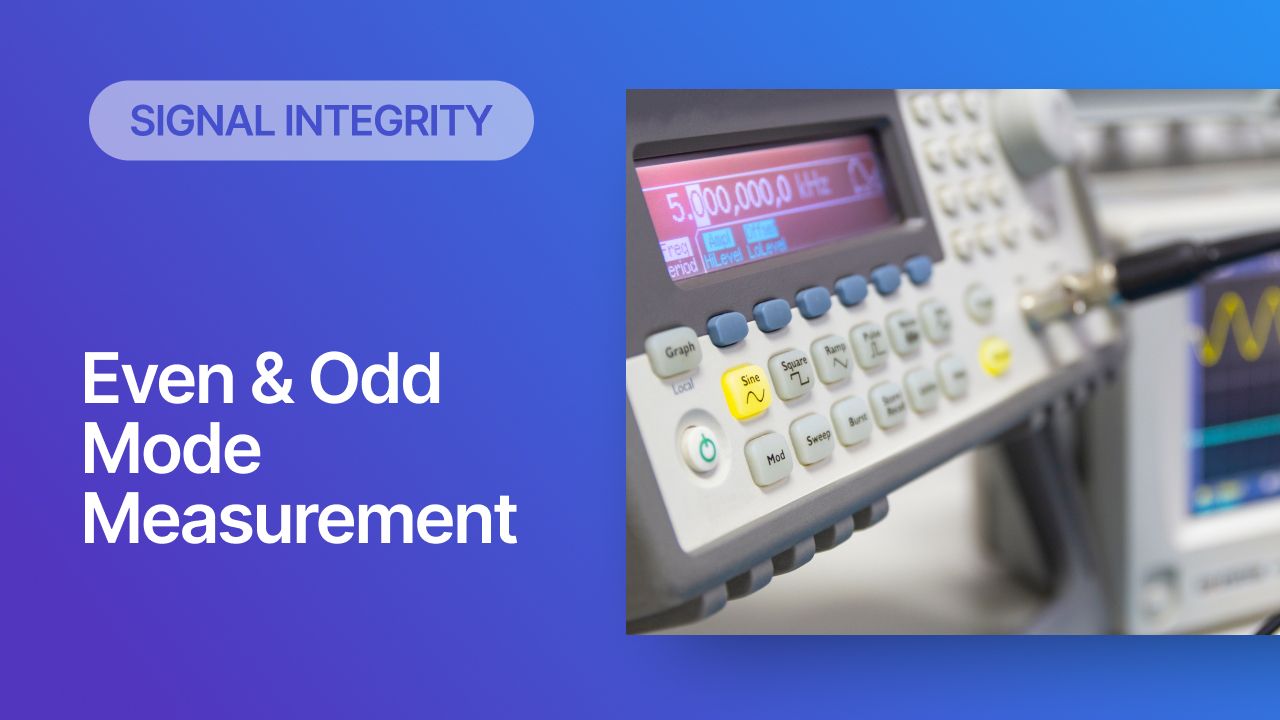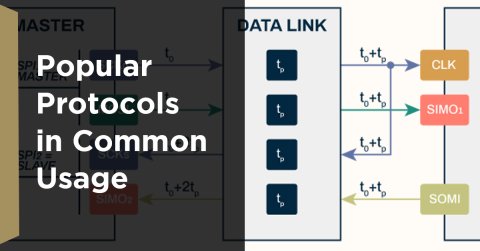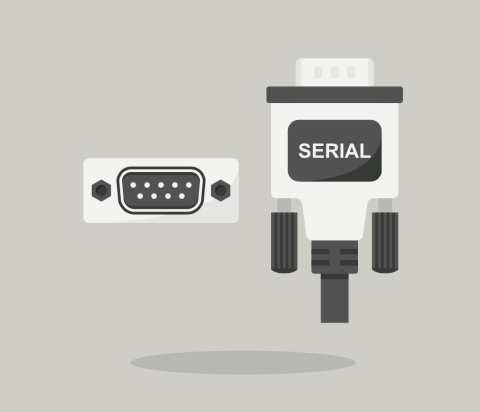Transmission Line Impedance Measurement: Even vs. Odd Mode

Single-ended transmission line measuerments are relatively simple compared to coupled transmission lines. You have half the number of ports, no parasitic to include, and of course, no phase sensitivity in driving to consider. Even-mode and odd-mode transmission lines couple capacitively and inductively, causing signals on the two lines to see impedance values that do not match the characteristic impedance, but this needs to be qualified for high-speed PCBs with measurements.
When designing interconnect solutions for ultra-high speed and high frequency boards, you’ll likely need to gather impedance measurements for your proposed designs. Simulations re useful here, but eventually a real product will need to be compared with the performance of a prototype. Here are the tools you need in order to measure impedances, including even and odd mode transmission line impedances, and how they relate to other fundamental measurements in digital systems.
Transmission Line Impedance Measurement Techniques
Impedance can be measured in the frequency domain and in the time domain (normally referring to measurements from TDR data), either from direct measurement or by calculation from other data. The measurement requires some important understanding of the limitations of your measurement instrument, and the nature of impedance on real transmission lines.
- Impedance is not constant throughout the signal bandwidth, i.e., it varies with frequency, and the variation is not a simple inverse square root dependence. Anyone familiar with the RCLG model should be aware of this.
- Signal distortion occurs as the signal travels down the transmission line, and time-domain measurements do not reveal the frequency-dependent distortion clearly. Either you need a frequency-domain measurement, or you need to calculate the frequency-dependent impedance.
- The bandwidth of your impedance measurement will always be limited. In particular, time-domain measurements will severely limit the bandwidth unless your measurement is very fast. Therefore, the much information you can extract about your transmission line impedance and dispersion will be limited to some maximum frequency.
The two transmission line impedance measurement techniques we'll look at here are time-domain reflectometry (TDR, and the related time-domain transmission measurement, TDT) and S-parameter measurements in the frequency domain. It is possible to use a vector network analyzer (VNA) to build mixed-mode S-parameters for coupled transmission lines, which would give you the common-mode impedance or differential-mode impedance of a coupled transmission line pair. To do these measurements, you need a TDR module, or a scope with a TDR setting built into it, and a VNA with decent bandwidth.

With these instruments, we can get a single-ended impedance value for each line in a pair of coupled lines, or we can get the differential impedance more directly. The table below summarizes which techniques will produce which types of impedance determinations.
|
|
|
|
|
|
|
|
|
|
|
|
|
|
|
Some oscilloscopes and VNAs will have a TDR setting included, so you may only need a single instrument to do these measurements. If you don't have a quarter million dollars for a 4-port wideband VNA, there are fast TDRs available that can be used to determine these impedances.
Single-ended Characteristic Impedance
Time-Domain Reflectometry (TDR)
TDR measurements are often brought up in terms of single-ended transmission lines and optical fibers to measure reflectivity; the measured reflection of a pulse in the time domain can be used to calculate the line's would then give a same technique can be for a transmission line impedance measurement. This involves sending an impulse down a channel and measuring the time required for a signal to reflect off of an imposed impedance discontinuity. For a transmission line impedance measurement, this requires placing an element with a known impedance at the far end of the line; what is then being measured for a sufficiently long line is the input impedance at the load end.
This time-domain measurement reveals the phase shift due to reflection (either 0° or 180°) and the level of the reflected/transmitted signal. From this data, you can calculate the transmission line’s impedance from the complex reflection coefficient using the formula below:

Complex reflection coefficient between a transmission line and the source/load. For reflection off the source end, Z0 is the source impedance, and ZL is the transmission line characteristic impedance. For reflection off the load end, Z0 is the transmission line characteristic impedance, and ZL is the source impedance.
Here, this assumes that the source is perfectly matched to the transmission line, which is an unknown quantity, although that reflection can be determined and used to determine the input impedance at the line's input. The moral of the story is: be careful what you're calculating when you used the reflection data to determine impedances.

What you're actually measuring in the case with a TDR is the transmission line's impulse response, so if you wanted to, you could calculate the transfer function for the transmission line if you can measure the signal's voltage level at the load end of the line. The bandwidth of signal that you can measure will be limited by width of the input pulse (they are inverses). However, the transfer function gives you complete information about the line and can be used to determine ABCD parameters, followed by S-parameters.
Ultimately, the time-domain approach is not complete because you are losing all the frequency information, so the reflection coefficient you measure in the time domain can be thought of as a frequency-weighted average of a non-constnant impedance. While not strictly true mathematically, the frequency-domain data is less important than the frequency-domain data, which reveals the true nature of a transmission line, as well as coupled lines. This is where we would use an S-parameter measurement.
S-parameter Measurement
An S-parameter measurement treats a transmission line as a 2-port network and requires a 2-port VNA. The incoming/outgoing voltage and current (power) are measured with this device and used to determine the values in an S-parameter matrix in the frequency domain. This type of measurement can be easily configured with a VNA. What you are actually measuring is the input impedance at the input port of the line, which can then be used to calculate the characteristic impedance and propagation constant for a single line.
Rather than go into all of the math behind this, I’ll refer you to any advanced electronics textbook, or you can take a look at this PDF to see how to convert Z-parameters with a characteristic impedance value to S-parameters with a defined reference impedance. The important point here is that the reflection coefficient at each end of the line can be calculated from the S11 coefficient, which can then be converted back to the transmission line impedance as a function of frequency.
Note that a VNA is an invaluable piece of equipment to keep in your lab, even if it is a low-bandwidth unit. Higher-end units can provide S-parameter to impedance parameter calculations automatically for a given reference impedance, and some can provide a TDR measurement.
Even and Odd Mode Impedance for Coupled Lines
When examining coupled transmission lines for common-mode or differential driving, you either have to source two separate TDR/TDT signals on the two lines simultaneously, or you have to measure the even/odd mode impedances. The even mode impedance is simply the impedance of a single line when the two lines are driven in common mode. This is quite simple with a VNA as you can directly measure the S-parameters in the frequency domain and then convert this to an impedance.
The same procedure applies for odd mode impedance, where the coupled lines are driven in differential mode. After you calculate the even and odd-mode impedances, simply calculate the differential and common impedance as shown below.

Note that, when we are dealing with coupled lines, the characteristic impedance is not so important anymore. The important values are the even-mode and differential impedance values. In an ideal situation, the even-mode impedance will be nearly equal to the characteristic impedance, and the differential impedance will be nearly double characteristic impedance with low coupling.
Essentially, if you know the characteristic impedance of each line, and you know one of the coupled impedances, you can calculate the other coupled impedance. This is because the even and odd mode impedances are related to the characteristic impedance through a transfer impedance, which essentially has the same definition as in a PDN:

Here, Z11 is the characteristic impedance looking into port 1 for one of the transmission lines. If the transfer impedance is known, then you can calculate the differential impedances from single-ended measurements.
- Read more about designing to a differential impedance specification
- Read more about the six important transmission line impedance values
TDR for Coupled Impedance
The coupled impedances for a pair of lines can be measured with a TDR, although the same bandlimiting effects and port impedance effects apply. The coupled impedances are determined in the following manner:
- Even/common-mode impedances - These can be measured with a single-ended TDR. Just tie the pair of lines together at their ends and source with a single signal, the impedances you measure will be common-mode, and this can be used to calculate the even mode.
- Differential mode - This requires a 2-output TDR module with selectable polarity. Note that the phases of the input signals must be precisely phase matched with any connecting cables and on the PCB, otherwise you will get significant errors in the measurement.
Note that the differential-mode measurement with selectable polarity output can also be used to determine common-mode impedances. Once the coupled and characteristic values are known, the transfer impedance between the lines can also be determined.
VNA for Coupled Impedance
A single-ended VNA can be used to determine coupled line impedances directly. In this case, you are measuring the mixed-mode S-parameters across 4 ports. Some VNAs will have selectable reference impedances through its connector plugs or internally in the device. You can then determine the differential input impedance or common-mode input impedance with the following equations:

In the above equation, we assume that both ports on the coupled lines are at the same reference impedance (Zref).
If your VNA is only a 2-port device, then you can use it to determine the mixed-mode S-parameters for the differential/common-mode transmission line arrangement. To do this, follow this process:
- Measure the multi-port S-parameters with the 2-port device by terminating the other ports (see here for more information)
- Convert the single-ended S-parameters from Step 1 to the mixed-mode S-parameters using the equation groups shown below.
The image below outlines all the equations needed for these conversions. We can thank one of our podast guests, Bert Simonovich, for compiling these measurements. Make sure to check out his Signal Integrity Journal article linked in the caption.

Compare Your Measurements Against EM Field Simulations
Whenever you’re designing and measuring interconnects for advanced applications, you should compare your results to data from an EM field solver. Full-wave solvers are not necessary to get some basic measurements of transmission lines, you can use the 2D cross-sectional field solver in your PCB routing tools or some external 2D/3D solvers that are specific to transmission lines. Full-wave solvers become more important when boards become very complex, and when there are other structures nearby that can affect impedance and noise injection into the transmission line/coupled lines. If lines in a complex board are being qualified and the board needs to be debugged, then a full-wave solver could help reveal the problem that is causing a board to fail.
If you want to learn more about working with transmission line measurements and calculations, take a look at these articles:
- Methods For Calculating And Measuring Impedance, Part 1
- Methods For Calculating And Measuring Impedance, Part 2
- Why is There a Transmission Line Critical Length?
The layer stack manager in Altium includes an integrated electromagnetic field solver to help you accurately determine impedances, and the routing tools can help you quickly update your design based on simulation and measurement results. When you’ve finished your design, and you want to release files to your manufacturer, Altium makes it easy to collaborate and share your projects.











